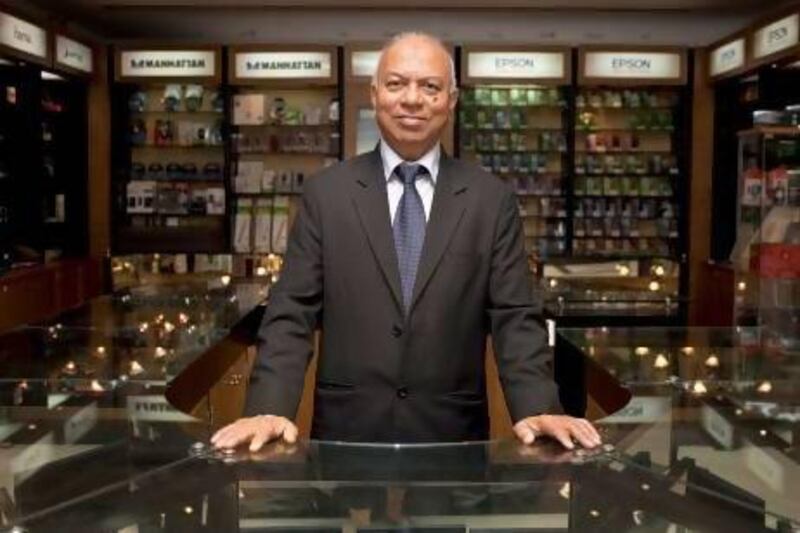ABU DHABI // Qasr Al Hosn has been a silent spectator to 250 years of change, from empty surrounds, to old neighbourhoods of villas, to the high-rise towers that dominate the capital's skyline today.
Long-time residents such as Mohammed Yar, 63, who has lived and worked around the white fort for more than 30 years, have fond memories of the capital's oldest landmark and the dramatically altered landscape around it.
The Bangladeshi expatriate has spent more than half of his life in the UAE.
He came to the country in 1975 and worked in Dubai before moving to Abu Dhabi in 1981 as a cashier at the Grand Stores - the first large and modern shop in Diwan Amiri, now called Khalidiya, near Qasr Al Hosn.
"There were small villas lining the neighbourhoods back then," Mr Yar recalls. "Everyone, be it locals, Pakistanis and Indians, used to live alongside each other in the villas.
"The tallest high rises you could see were three-storey buildings and Al Hosn Street was only a single road back then."
Mr Yar, who still works at the store, now as assistant showroom manager, remembers the simplicity of life in the capital.
"People led a very common life here," he said. "Everyone used to walk to get to places.
"The cost of living was low. Rent, food, electricity and water charges were minimal. But gradually, as the country developed, life has become expensive."
Mr Yar said many of the Emirati families who lived in Diwan Amiri, gradually moved away to Jabriya, Muroor or past Maqta Bridge as the standard of living improved.
"I remember the old days," he said. "It gives us inspiration and we have to better ourselves.
"I visited Qasr Al Hosn more than 10 years ago to see the library and sit in on some lectures.
"It had a very academic feel to it and was very progressive, in the sense that it had a well-stocked library and a seminar hall for lectures and government programmes.
"Today there are hotels for these things but earlier, the fort's halls hosted such events."
Mr Yar revisited the fort this week to watch the Qasr Al Hosn heritage festival unfold.
"I watched a silent movie on how people used to live here decades ago and how things began in this country," he said.
"The fort is a living history that we have to remember. It is a holy place and everybody should know what the fort stands for.
"It is a historical landmark and people should not forget their forefathers. It is good efforts are taken to keep their memories alive."
Mr Yar said he would keep his ticket as a souvenir and visit again before the festival ends.
Abdullah Bekal, 49, who has been working at a grocery store in Diwan Amiri for more than a decade, said the area around the fort was once a quiet neighbourhood.
"Everything was so silent around here. Now, it is very busy and has changed completely with development," said Mr Bekal, who works in the Abu Dhabi Star Grocery.
He said the festival was important to remind expatriates and locals about the fort's place in history.
"I used to visit the fort before. It is an important landmark and people should remember this historical fort so the younger generations will know its significance," Mr Bekal said.
For expatriates like Aiman Sham, 41, the fort and the Abu Dhabi Cultural Foundation in the vicinity are synonymous with the country's rich heritage and culture.
"It's a central place and a cultural hustle bustle," said Mrs Sham, from India.
"Though many towers have come up in the area, the Government has maintained the area as it is."
She used to visit the Cultural Foundation, now under renovation, to borrow books and study for her long-distance Master's degree in literature.






